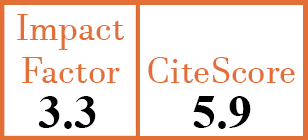Full Papers
Impact of immunosuppression on development and outcome of systemic sclerosis-associated pulmonary arterial hypertension
S. Rodolfi1, C.C.M. Ng2, A.M. Ruiz Bejerano3, M. Kanitkar4, V.H. Ong5, C.P. Denton6
- Centre for Rheumatology, University College London and Royal Free London NHS Foundation Trust, London, UK, and Department of Biomedical Sciences, Humanitas University, Pieve Emanuele, Italy.
- Centre for Rheumatology, University College London and Royal Free London NHS Foundation Trust, London, UK, and Department of Medicine, Queen Elizabeth Hospital, Hong Kong SAR, China.
- Centre for Rheumatology, University College London and Royal Free London NHS Foundation Trust, London, UK, and Rheumatology Department, Hospital Universitario Ramòn y Cajal, Madrid, Spain.
- Centre for Rheumatology, University College London and Royal Free London NHS Foundation Trust, London, UK.
- Centre for Rheumatology, University College London and Royal Free London NHS Foundation Trust, London, UK.
- Centre for Rheumatology, University College London and Royal Free London NHS Foundation Trust, London, UK. c.denton@ucl.ac.uk
CER18741
2025 Vol.43, N°8
PI 1492, PF 1498
Full Papers
Free to view
(click on article PDF icon to read the article)
PMID: 40757425 [PubMed]
Received: 20/03/2025
Accepted : 10/06/2025
In Press: 01/08/2025
Published: 01/08/2025
Abstract
OBJECTIVES:
Pulmonary arterial hypertension (PAH) is a frequent and severe complication of systemic sclerosis (SSc). Despite the improvements achieved in recent decades, PAH remains a cause of significant clinical burden, and treatment mainly relies on a combination of vasodilatory and anti-proliferative agents, following the same therapeutic approach used for idiopathic PAH.
METHODS:
We retrospectively analysed the records of 607 patients reviewed in our centre. PAH was defined as pre-capillary pulmonary hypertension (mPAP ≥ 25mmHg, PVR >3WU, PCWP <15mmHg) in absence of significant hypoxic component (patients with clinically significant airway disease, or with interstitial lung disease and FVC <70%, were excluded from PAH group). Early immunosuppression (IS) was defined as treatment within the first 5 years after SSc onset with conventional or biologic disease-modifying anti-rheumatic drugs (DMARDs), or a prednisone-equivalent dose ≥10mg/day.
RESULTS:
Out of 607 patients, 77 received a diagnosis of PAH. Early immunosuppression was not associated with reduced odds of developing PAH (OR 0.74, p=0.495). However, when analysing individual immunosuppressive agents, early treatment with mycophenolate mofetil was associated with a significant protective effect (OR 0.12; p=0.048). Immunosuppressive treatment was associated with a significant reduction in mortality risk (HR 0.41; p= 0.045), attributable to the effect of hydroxychloroquine, which was the only agent showing an impact on survival (HR 0.04; p= 0.004).
CONCLUSIONS:
In this retrospective monocentric study early treatment with mycophenolate was associated with reduced odds of developing SSc-PAH, while treatment with hydroxychloroquine showed a significant improvement in survival in patients with established SSc-PAH.


